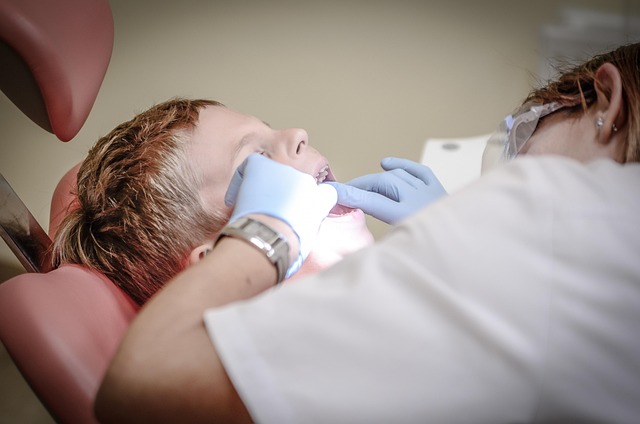Discover the Future of Dental Implants: Screwless Solutions for Many Patients
If you've been considering dental implants but have been concerned about the costs, there's encouraging news: screwless dental implants offer an innovative approach that can provide a more comfortable and quicker solution for many patients. While affordability varies depending on individual circumstances, these implants may help make dental restoration options more accessible to a broader range of people.

Screwless dental implants have emerged as a revolutionary approach to tooth replacement, offering patients an alternative to conventional implant procedures. These innovative solutions utilise advanced techniques and materials to secure artificial teeth without the need for traditional titanium screws, potentially reducing treatment time and improving patient comfort.
What Are Screwless Dental Implants?
Screwless dental implants, also known as mini implants or immediate load implants, represent a departure from traditional implant methodology. Unlike conventional implants that require drilling and placement of titanium screws into the jawbone, screwless systems utilise smaller diameter posts or alternative anchoring mechanisms. These systems often employ one-piece designs that can be placed through minimally invasive techniques, reducing the surgical trauma typically associated with standard implant procedures.
The technology behind screwless implants varies depending on the specific system used. Some utilise narrow-diameter titanium posts that require smaller pilot holes, while others employ innovative materials and surface treatments that promote rapid osseointegration. The key distinction lies in the reduced surgical requirements and simplified placement procedures.
How Do Screwless Implants Compare to Traditional Options?
When comparing screwless implants to traditional options, several factors differentiate these approaches. Conventional dental implants typically require a two-stage surgical process: initial implant placement followed by a healing period of several months before crown attachment. Screwless systems often allow for immediate loading, meaning temporary or permanent crowns can be placed on the same day as the implant.
Traditional implants generally offer superior long-term stability and are suitable for a wider range of clinical situations, including cases with significant bone loss. Screwless alternatives may have limitations in terms of load-bearing capacity and may not be appropriate for all patients, particularly those requiring extensive reconstruction or having compromised bone density.
The surgical complexity also differs significantly. Traditional implants require precise drilling and may necessitate bone grafting procedures, while screwless options typically involve less invasive placement techniques with reduced healing times.
Who Can Benefit from Screwless Dental Implants?
Screwless dental implants may be suitable for specific patient populations, though careful evaluation is essential. Ideal candidates typically include individuals with adequate bone density who require single tooth replacement or small bridges. Patients with medical conditions that complicate traditional surgery, such as diabetes or cardiovascular issues, might benefit from the less invasive nature of screwless procedures.
Those seeking faster treatment timelines often find screwless options appealing, as the reduced healing time can mean quicker return to normal function. However, patients with heavy bite forces, extensive tooth loss, or insufficient bone structure may not be suitable candidates for these systems.
Age can also be a factor, with some screwless systems being particularly beneficial for elderly patients who may not tolerate extensive surgical procedures well. The decision ultimately depends on individual oral health status, bone quality, and specific treatment goals.
What’s the Recovery Process Like?
Recovery from screwless dental implant procedures typically involves less discomfort and shorter healing times compared to traditional implants. Most patients experience minimal swelling and can return to normal activities within 24-48 hours. Pain management usually requires only over-the-counter medications, though prescription pain relief may be provided for individual cases.
Dietary restrictions are generally less stringent, though patients are advised to avoid hard or sticky foods for the first few days. Oral hygiene protocols are simplified, with gentle brushing and prescribed mouth rinses being the primary care requirements.
Follow-up appointments are scheduled to monitor healing and ensure proper integration. The timeline for full recovery varies but is typically measured in weeks rather than months, contrasting with traditional implants that may require several months for complete osseointegration.
Understanding the Costs of Screwless Dental Implants
The financial investment for screwless dental implants varies considerably based on the specific system used, geographic location, and individual treatment requirements. Understanding these costs helps patients make informed decisions about their dental care options.
| Treatment Type | Provider Category | Cost Estimation (£) |
|---|---|---|
| Single Screwless Implant | NHS Dental Services | £2,500 - £3,500 |
| Single Screwless Implant | Private Practice | £1,800 - £4,000 |
| Mini Implant System | Specialist Clinics | £1,200 - £2,800 |
| Immediate Load Implants | Cosmetic Dentistry | £2,000 - £5,000 |
| Full Arch Restoration | Implant Centres | £8,000 - £15,000 |
Prices, rates, or cost estimates mentioned in this article are based on the latest available information but may change over time. Independent research is advised before making financial decisions.
Several factors influence the total cost of screwless implant treatment. The complexity of the case, need for additional procedures such as bone grafting or extractions, and the type of restoration required all impact the final price. Geographic location within the UK also plays a significant role, with London and other major cities typically commanding higher fees.
Insurance coverage for screwless implants varies, with some policies covering portions of the treatment while others may exclude implant procedures entirely. Patients should verify their coverage details and explore payment plan options that many practices offer to make treatment more accessible.
Screwless dental implants represent an exciting advancement in restorative dentistry, offering patients new possibilities for tooth replacement with potentially reduced surgical trauma and faster recovery times. While not suitable for every clinical situation, these innovative systems provide valuable alternatives for appropriate candidates seeking efficient, comfortable dental restoration solutions. As technology continues to evolve, screwless implant systems are likely to become increasingly refined, expanding their applicability and improving patient outcomes.
This article is for informational purposes only and should not be considered medical advice. Please consult a qualified healthcare professional for personalised guidance and treatment.




